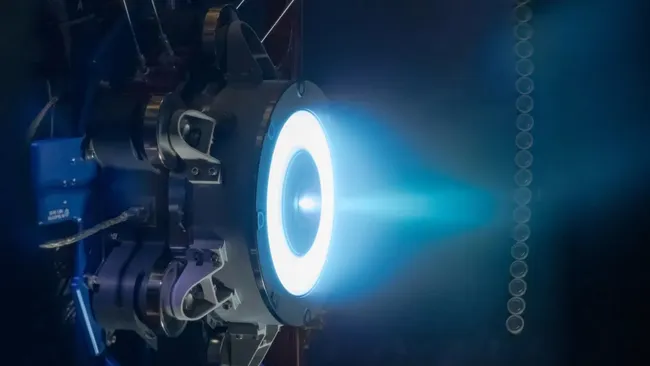New engines tested for NASA’s Gateway lunar space station
- November 10, 2023
- 0
NASA and Aerojet Rocketdyne are taking a big step in testing a new ion engine that will help explore the moon. The Advanced Electric Propulsion System (AEPS) is
NASA and Aerojet Rocketdyne are taking a big step in testing a new ion engine that will help explore the moon. The Advanced Electric Propulsion System (AEPS) is

NASA and Aerojet Rocketdyne are taking a big step in testing a new ion engine that will help explore the moon. The Advanced Electric Propulsion System (AEPS) is undergoing qualification testing at the Glenn Research Center in Cleveland, the agency said.
AEPS It is a Hall effect engine that accelerates ions to create thrust. AEPS uses electricity generated by solar panels to create a constant flow of ionized xenon gas, creating a low but highly efficient thrust.
According to NASA, the 12-kilowatt Hall thruster is the most powerful electric thruster in production and is more than twice as powerful as the current modern space electric thruster. The agency says the new engine will be critical for future science and exploration missions to the Moon and beyond.
“AEPS is truly a next-generation technology,” Clayton Kachele, AEPS project manager at NASA’s Glenn Research Center in Cleveland, said in July. under pretest time.
“Current power plants consume about four and a half kilowatts of power, whereas here we are significantly increasing the power of the single engine,” Kachele added. “This opportunity opens up a world of possibilities for the future of space exploration, and AEPS will get us there faster and faster.”
Thrusters will be used on the Gate Power and Propulsion Element (PPE); NASA’s planned lunar space station to support Artemis missions and more. Xenon gas for the engines will be one of the resources that will need to be replenished by cargo missions to the Gateway to ensure the smooth operation of the small lunar station. For this purpose, OHB in Bremen, Germany, is developing a special Xenon Transmission System (XTS).
In 2024, NASA will test the second qualification item of the engine. This test will simulate conditions likely to be encountered by AEPS during Gateway’s initial ascent and transition into lunar orbit. NASA plans to run the engines for 23,000 hours during the approximately four-year test campaign in NASA’s Glenn vacuum chambers.
PPE is currently scheduled to launch on a SpaceX Falcon Heavy rocket in November 2025.
Source: Port Altele
As an experienced journalist and author, Mary has been reporting on the latest news and trends for over 5 years. With a passion for uncovering the stories behind the headlines, Mary has earned a reputation as a trusted voice in the world of journalism. Her writing style is insightful, engaging and thought-provoking, as she takes a deep dive into the most pressing issues of our time.